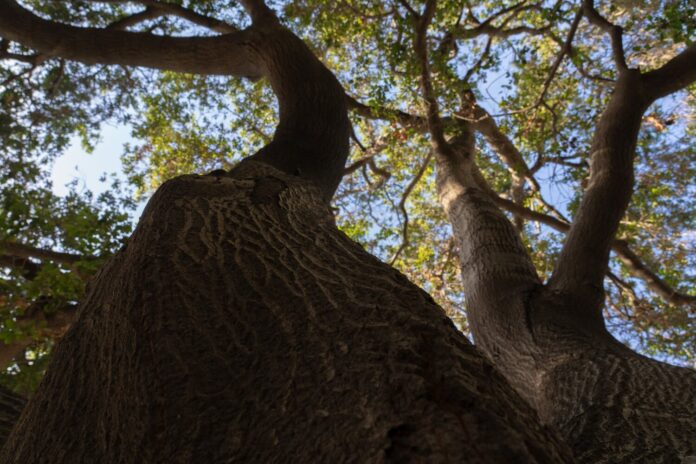
Every weekday afternoon, a migration occurs. Students shuffle from where they have been congregating for lunch — the benches, the grass or the tables — into their classrooms. Now cut off with walls and doors from the rest of the school, they dive into the subject of the day, which, for students at a liberal arts school like Occidental, can include quite the range. Reversing this migration, six professors from various departments bring the approaches and contents of their academic disciplines out into the open air of the Academic Quad. Here, the uniqueness and commonality of their different subjects can shine in the bright LA sun, and the layers of the Quad are unveiled under their thoughtful gaze.
Island of refuge — Biology
If you stare up from the Quad, the view is mostly green and almost always moving in the breeze. Blue peeks through — the trees divide the light space, which creates a patchwork that makes the sky visible only through sporadic holes in the canopy.
Shade, according to professor of biology Gretchen North, is just one of the gifts that the oaks on the Quad give us. She said this shade is not only essential for birds to make their nests, ensuring young birds will not overheat, but also beneficial for people.
“They really lower the temperature,” North said. “This is really an island of refuge for humans too.”
Quercus agrifolia (coast live oak) and Quercus ilex (evergreen oak or holly oak) are the two species of tree found on the main Quad, according to North.
“My favorite thing about Oxy is the oak trees,” North said. “Well, actually, I should say the students, but then the oak trees.”
North said her love for the trees means she is always worried about them.
“They seem to be threatened by all kinds of pests and pathogens and I’m just always looking at the trees with that in mind,” North said.
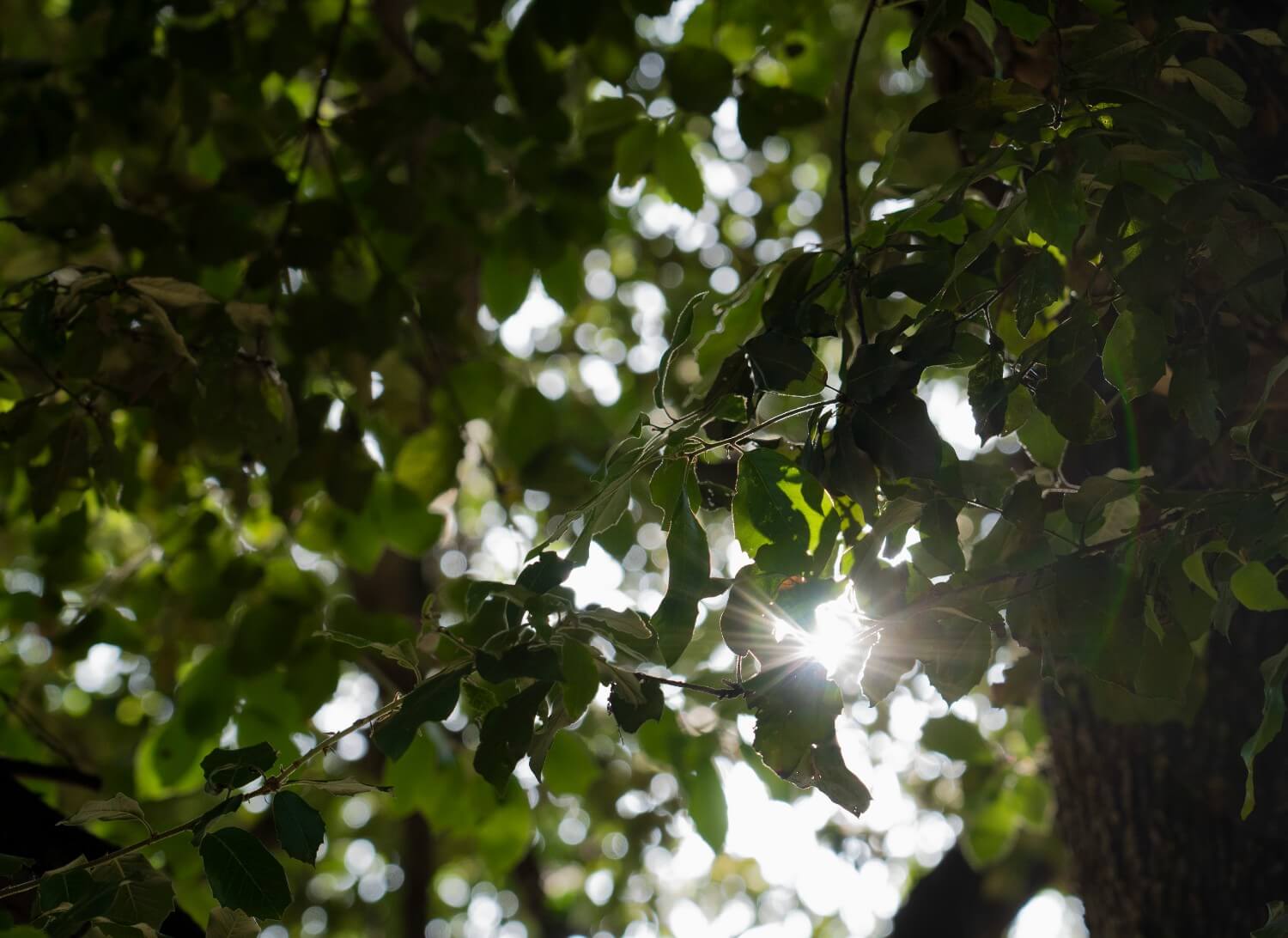
First identified in LA County ten years ago, the invasive shot hole borer infected some of the Quad oaks, according to North. However, she said the trees seemed to have endured the threat, likely because of drought conditions that are unfavorable to a harmful fungus which is introduced by the borers.
Approaching the Quad as a biologist raises many questions, from the fungi decomposing leaf litter to the birds and the bugs they eat. As North expressed them, the carbon dioxide of her breath dissipated into the air, eventually making its way through the stomatal pores of the leaves surrounding us. Invisible to the eye, the oaks soak up incredible amounts of carbon dioxide while photosynthesizing in the nearly constant LA sunshine, North said. According to data provided by North, a single coast live oak sequesters about 778 pounds of carbon dioxide each year and she said they may provide additional carbon offsets due to their cooling effect.
In the middle of the day, as the oaks intake this infamous greenhouse gas, they are at the point of maximum water uptake, according to North. She said the oaks lift water from the deepest part of the soil, in a process called hydraulic lift. As the evening brings cooler temperatures the water continues to be lifted but it is released into the top layer of soil.
“It sustains the whole soil community that way,” North said. “The only way the nutrients in the [leaf litter] can be broken down is if the soil has a certain amount of moisture.”
North, who majored in English as an undergraduate and later taught English in high school, stepped out of biologist mode to comment on the beauty of one of the oaks.
“Its form is just so gorgeous,” North said. “I don’t know that I would even think of it as a biologist, I’d think of it more as an artist or a philosopher.”
Third space — Sociology
Between the dorm room and the classroom exists an alternate world — what sociologist Ray Oldenburg calls a third space. Professor of sociology Jan Lin said this is one framework from the urban sociologist literature on public spaces that could be applied to the Quad.
However, Lin said that over time technology is affecting public spaces like the Quad because the internet serves as a digital public space where students can form friendships and become affiliated with different organizations. Yet, according to Lin, there still seems to be an importance to having physical public spaces in which to gather.
“The third spaces give us a space for informal social gathering,” Lin said. “And through those kinds of informal social gatherings, people develop friendships.”
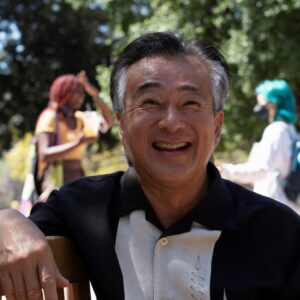
In addition to forming relationships through informal meetings and voluntary activities like participating in clubs, third spaces such as the Quad can also be a place for civic engagement, according to Lin. Historically, Lin said campus quads have served as important political meeting places, such as at UC Berkeley’s Sproul Plaza where protests took place helping to bring national attention to the Free Speech Movement.
This has also been the case at Occidental’s Quad, according to Lin. He said it has served as a place for all kinds of First Amendment expressions, including protests centered on South African apartheid and sexual assault on campus, and movements like Occupy Wall Street and the AGC Occupation.
Lin said the Quad is a micro public space, which helps us understand the way students form a public. The importance of the political and personal activities occurring in this micro public space also have broad impacts beyond it, according to Lin.
“One could say that students constitute the first public because they take their concerns and activism from college and university into other realms of life, so they help to constitute other public spaces,” Lin said.
Shared molecular foundation — Chemistry
Synthesizing organic molecules is research that does not happen outdoors. Coming out onto the Quad from the lab is always a much needed breath of fresh air for chemistry professor Raul Navarro.
“Organic chemistry is very much a benchtop science,” Navarro said. “[Going to the Quad] becomes an exercise in really taking a step back from the minutiae of the details that I’m doing.”
This breath of fresh air — inhaling bits of atmosphere containing oxygen, carbon dioxide and nitrogen — is just one encounter we and other lifeforms have with molecules on the Quad. Navarro said being in the space helps him appreciate that everything living we interact with has its basis in organic chemistry — carbon binding with itself and to hydrogen, oxygen and nitrogen. Looking around though, Navarro said it was the green that stood out the most.
“The beautiful green that we see around here, the trees and the plants and the grass, that color ultimately comes from the fact that these plants produce a molecule that absorbs light, all light except green light,” Navarro said. “That all comes down to a simple organic molecule absorbing the energy of the sun.”
Out in the sunlight people sit together and, while he does not specialize in this area of chemistry, Navarro said neurotransmitters that can cause changes in our mood are at play in social interactions. The connectivity continues — Navarro said his biggest takeaway from a space like the Quad is a recognition of life’s immense simplicity in its shared basis of atoms.
“All of this complexity comes from the simplicity of that,” Navarro said. “There’s a lot of really crazy molecular machinery at play that does all of this but again, it all comes down to really simple atoms.”
Source of inspiration — Writing & Rhetoric
Start with your senses. With no agenda, note what you observe. To capture the character of a space requires many hours spent in it. This is what Writing & Rhetoric Professor Sarah Ostendorf advises as a way to begin writing about a particular space.
There are limitless stories that could be written using the Quad as a setting or inspiration, but out of the stories that already exist Ostendorf said the most famous is probably “Clueless.”
“In terms of who gets to control the story there are a lot of interesting questions,” Ostendorf said. “There’s a question of who technically owns the space right, which is Oxy, but there are also a lot of other political questions that go into that. Whose voices are valued, whose voices are amplified?”
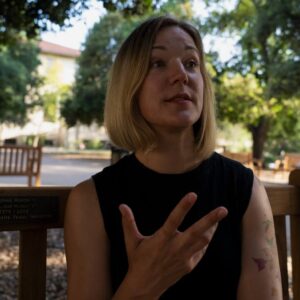
Crossing the Quad multiple times each day, Ostendorf said she likes that it serves as a window into student life. When school was virtual, Ostendorf said she would still come to campus occasionally and missed the social energy of the space.
“Seeing the Quad empty everyday, that felt particularly sad because I’m so used to thinking of this as a crossroads,” Ostendorf said.
As such, Ostendorf said the Quad becomes a place of possibility — both for the limitless kinds of social encounters one might have and the endless sources of inspiration when crafting a story. If she were to write one, Ostendorf said it would be about the birds or a day in the lives of people she meets on the Quad.
“You can layer on a narrative and make it a short story. You can layer on some science and make it science writing or nature writing,” Ostendorf said. “The common denominator I think in all of these things is the Quad is inspiration.”
Ground of forgotten stories — History
What you see now is not what has always existed.
“I think not only of what I see here, but what is back in time on this spot,” Professor of History Sharla Fett said.
Specializing in early U.S. and colonial North American history, Fett said she starts this retroactive thinking with Indigenous peoples.
“What was this spot before it was Oxy?” Fett said. “Before it was a territory in the United States, before it was a territory of Mexico?”
Also a professor in the Black Studies and American Studies departments who studies abolition, Fett said she next thinks of the social movements that have manifested as protests on the Quad.
Just as in the present and recent memory, Fett said we have to examine power dynamics throughout history.
“Different people know different landscapes differently by how they exist,” Fett said. “How do you see the Quad differently when it’s your workplace? And what’s the history of who’s worked at Oxy and who hasn’t? Who keeps this place beautiful for us is an important question because often that labor is invisible.”
In uncovering these forgotten and invisible histories, Fett said historians simultaneously consider change and continuity. Doing so, according to Fett, involves both locating and reviewing primary sources (everything from meeting notes to emails and newspaper archives) and collecting oral histories.
Fett said this process of engaging the past might also require confronting distressing facts about the Quad, like how it might even reflect settler colonialism. It is important, she said, to ask who has felt welcome in the space and who has not been included — even if this history makes us uncomfortable.
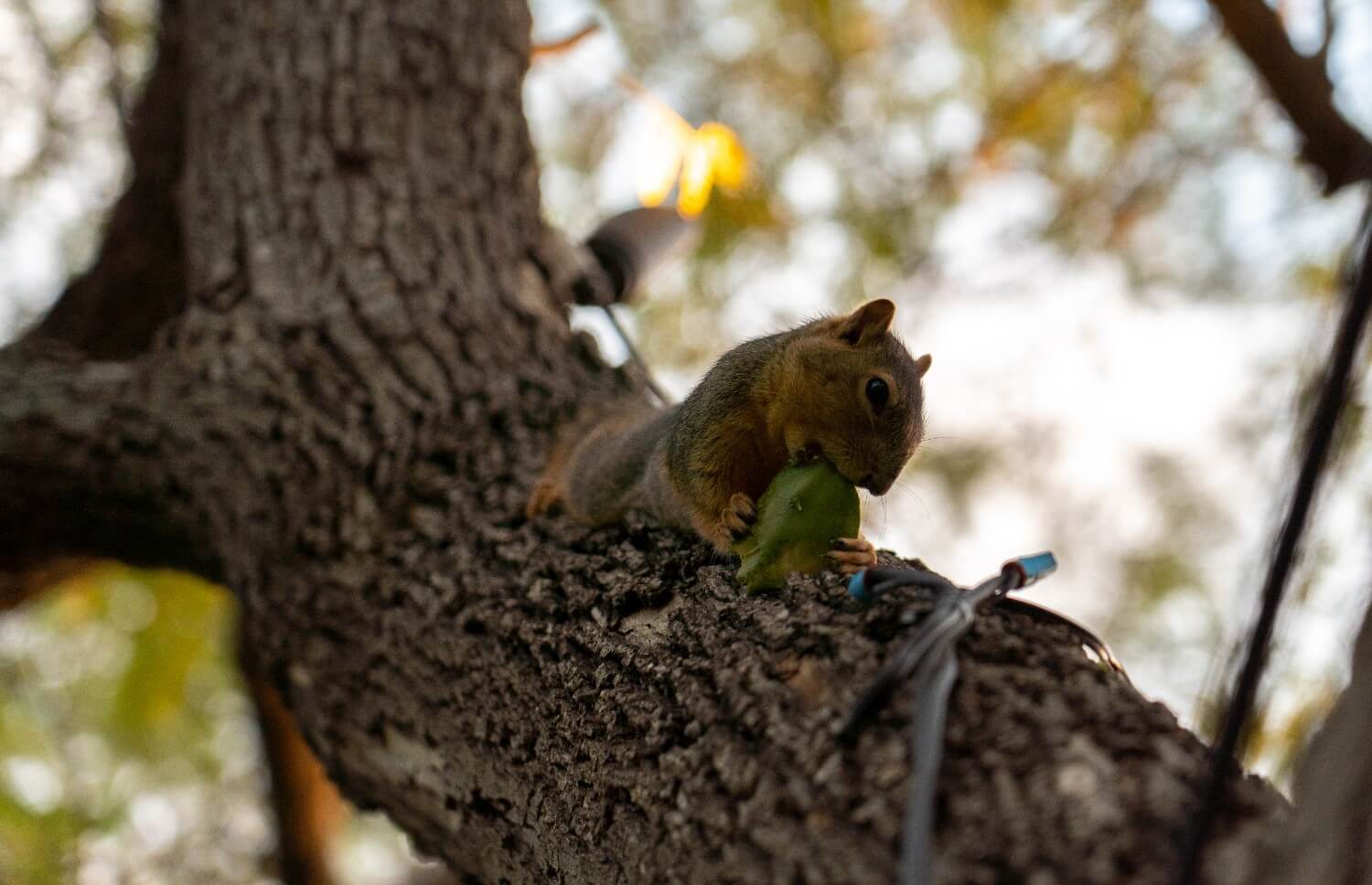
The agora — Comparative Studies in Literature & Culture (CSLC)
Looking back even further in time, and farther across space, professor of CSLC Sydney Mitsunaga-Whitten immediately associates the Quad with the ancient Greek agora. Typically translated as a “marketplace,” Mitsunaga-Whitten said this interpretation misses that the agora was not originally used for buying and selling goods.
“It comes from the word agó in Greek, which means to lead or herd or drive,” Mitsunaga-Whitten said. “It’s sort of a place where people are led together, where they congregate and encounter one another.”
One of the key characteristics that highlights the similarities between the Quad and agoras, according to Mitsunaga-Whitten, is what they lack.
“What I love about the Quad is that it’s empty,” Mitsunaga-Whitten said. “There’s no advertisements. There’s no words.”
The agora was kept empty and without any statues dedicated to a deity or political ruler, Mitsunaga-Whitten said, which was central to the emergence of democratic politics.
“Nobody ruled that space,” Mitsunaga-Whitten said. “Decisions mean there are no right answers. We just take our best shot together. And so people aren’t related to each other any more by some kind of sacred bond, they’re just coming together for no reason at all except for their decision to be that way.”
She said this kind of openness is also what makes the Quad a place for free and serendipitous encounters that have no set expectations or certain endings.
“It’s left empty so we can express ourselves freely so we can experience a kind of infinite and continual evolution of relationships, of ideas, because it’s not where the gods congregate,” Mitsunaga-Whitten said. “The gods live on the hill near the Admissions Office I’d imagine, just like in the Acropolis.”
As a 2011 graduate of Occidental, Mitsunaga-Whitten said she experienced this serendipity herself on the Quad when having a discussion with her advisor about “The Odyssey.” One of her most important intellectual conversations according to Mitsunaga-Whitten, it was in this moment on the Quad that she decided to pursue the study of the classics.
According to Mitsunaga-Whitten, the Greeks came into the agora with the goal of achieving glory through their words and actions.
“That’s largely what you’re in college for,” Mitsunaga-Whitten said. “To learn how to win glory with words and deeds. And that, of course, always happens in relation to other people.”
However, the Quad is also a place of solitude — Mitsunaga-Whitten said a good portion of her time spent there was alone. As compared to being alone in a dorm room, with closed doors and no possibility of encountering others, she said solitude on the Quad felt supportive even in private moments.
“It’s an enclosure that’s open,” Mitsunaga-Whitten said.
Whether you occupy it in solitude or in conversation with another, the Quad brings endless possibilities. Academically, Mitsunaga-Whitten said that it is a space for spillover conversations that happen beyond the classroom and beyond the syllabus.
“I think there’s a sense in which those moments of intimacy, intellectual intimacy, really take place in the cracks between institutional responsibilities,” Mitsunaga-Whitten said. “We set up the institution, we set up the syllabus, we set up all of these official guidelines in order, in some ways, to exceed them. And I’m grateful that the Quad is there to catch those moments.”
It is the central crossroads of campus and a beloved place for environmental connection, personal reflection, intimate conversation, public solidarity and communal celebration. In all its fullness, and emptiness too, the Quad can hold quite a lot.
![]()


































